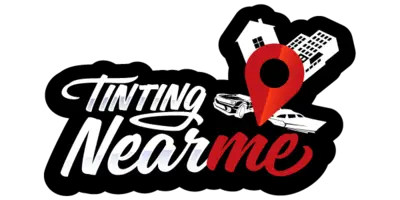2024 South Carolina Legal Tint Laws Explained
Navigating the murky waters of legal tint laws in South Carolina can feel like trying to find a needle in a haystack. As you seek to customize your vehicle, it’s important to know the specific 2024 regulations to avoid running afoul of the law. South Carolina’s rules regarding window tints are not only about aesthetics but also pertain to safety, visibility, and energy efficiency. Just when you think you’ve got it all figured out, there’s the question of medical exemptions to consider as well. So, are you ready to clear the fog and get a firm grasp on these regulations?
The information on myeyerx.net isn’t legal advice; consider it a starting point. Always verify with local and state authorities, as the final decision rests with you. We are not lawyers. For specific legal guidance, we can refer you to legal experts. Remember, knowledge of both state and local laws is essential, and even law enforcement might not be fully updated. We aim for accuracy but advise double-checking for the latest regulations.
Key Takeaways
Key Takeaways
Key Takeaways
- South Carolina mandates a minimum VLT of 27% for all windows.
- Different vehicle types have specific tint percentage rules.
- Prohibited tint colors include yellow, amber, and red.
- Reflective or metallic films are not allowed, except above the AS-1 line on windshields.
Need Help Getting a Medical Exemption?
Our Doctors Are Here For You!
MyEyeRx was established with the objective of simplifying the complex landscape of state regulations pertaining to legal tint medical exemptions for window tinting. For individuals seeking to navigate these regulations without resorting to a do-it-yourself approach, we offer a streamlined solution. Our team includes qualified medical professionals who are available to conduct consultations via Zoom. These sessions are designed to assess your eligibility for a medical exemption, ensuring a personalized and efficient process for acquiring the necessary documentation.
Understanding VLT in Tint Laws
To fully grasp the window tint laws in South Carolina, you first need to understand the concept of Visible Light Transmission (VLT), which refers to the percentage of visible light that is allowed to pass through a vehicle’s windows. When discussing car window tinting, the VLT percentage is a crucial factor. It’s the numerical value that signifies the transparency of the window film products used on your vehicle’s windows.
South Carolina Tint Laws mandate a minimum VLT of 27% for the front, rear, and back side windows. This means that at least 27% of sunlight must be able to pass through the window film applied. Understanding VLT in tint laws is essential to ensure your vehicle remains within the legal tint in SC.
Notably, different regulations apply to different types of vehicles. Passenger vehicles, SUVs, MPVs all have specific tint percentage rules to consider. These differences are designed to maintain road safety and visibility, so it’s important you are aware of the specific laws governing your vehicle type.
Besides the VLT, South Carolina’s window tint laws also prohibit certain colors and types of tint. You can’t use yellow, amber, or red tint colors. Reflective or metallic films are also off the table. However, non-reflective window tint is allowed above the AS-1 line on windshields.
Understanding these nuances is your defense against potential Tint Law Violations. As we head into 2024, it’s crucial to stay updated on South Carolina legal tint laws explained in detail. Ensure you are compliant and enjoy the benefits of tinted windows without the worry of legal repercussions.
Passenger Vehicles Tint Regulations
Having understood the general tint laws in South Carolina, let’s now focus on the specific regulations that apply to passenger vehicles. The South Carolina Window Tint Law stipulates that your car window tint must allow more than 27% of light in. This is known as the VLT (Visible Light Transmission) percentage, and it applies to both your side windows and rear windows.
Here is a closer look at the passenger vehicles tint regulations:
- Your side windows must allow at least 27.5% of light to pass through. This ensures adequate visibility for both the driver and other road users.
- The same VLT requirement applies to your rear windows. Remember, the legal tint for cars in South Carolina is not just about aesthetics but also safety.
- Unlike some states, South Carolina permits tinting on all side and rear windows. However, the Car Tint Rules still stress on the 27.5% VLT.
- For your windshield window tint, South Carolina allows a strip of tint up to 4 inches from the top of the windshield. This helps in reducing glare without obstructing your view of the road.
Bear in mind that reflective or metallic films are not permitted under the Tint Laws in South. Such films can reflect light into the eyes of other drivers, leading to hazardous situations on the road.
Multi-purpose Vehicles Tint Rules
Let’s delve into the specific tint rules for multi-purpose vehicles in South Carolina, which differ slightly from those for passenger vehicles. As per the South Carolina Window Tint Law, the front side windows of MPVs must have a maximum of 27% Visible Light Transmission (VLT). This refers to the tint darkness and is important for maintaining safety and visibility.
The tint rules in South Carolina for the rear side windows of multi-purpose vehicles, however, are more lenient. You’re allowed any level of tint darkness, provided there is a clear strip at the top. The clear strip helps ensure visibility for other drivers on the road, as well as for you when you’re checking your blind spots or reversing.
When it comes to the rear windows of these larger vehicles, you have even more freedom. The South Carolina legal tint laws stipulate that rear windows of multi-purpose vehicles, including vans in South Carolina, can be tinted to any darkness level with no requirement for a clear strip.
Now, what about reflective tints? Unfortunately, these are not allowed for multi-purpose vehicles in South Carolina. While reflective window films may look cool, they can cause hazardous glares for other drivers.
Lastly, it’s crucial to remember that dual side view mirrors are required if the rear windshield of your multi-purpose vehicle is tinted. This rule is in place to compensate for any potential loss of visibility due to the tint.
As you can see, the vehicle windows tint rules can vary, so it’s essential to understand these nuances to avoid any violations. Stay safe and enjoy your ride!
Medical Exemption in Tint Laws
In South Carolina, you might be surprised to learn that medical exemptions can allow for special window treatments, provided you have certification from an optometrist or physician. The current South Carolina Window Tint Law is accommodating to those with specific medical needs, such as skin disorders or light sensitivity.
The regulations regarding tinted windows are relatively flexible thanks to these tint exemptions in South Carolina. However, it’s important to keep in mind that while these exemptions allow for darker tints, there are still standards that need to be met:
- The vehicle’s windows cannot be more reflective than a standard window.
- Red, yellow, and amber tints are not permitted, even with a medical exemption.
- The medical certification must be carried in the vehicle at all times, ready to be presented to law enforcement.
- A renewal of the certification is required every two years.
These guidelines are part of the 2024 South Carolina legal tint laws explained, and they aim to ensure that the roads remain safe while accommodating those with specific medical needs.
As a vehicle owner, it’s crucial to be aware of these regulations and respect them. Failing to do so could result in penalties. Always seek legal advice if you’re uncertain about the rules. Remember, the intent of these laws is to balance individual needs with public safety. So, let’s keep our roads a safe place for everyone while accommodating those in need.
If you would like to bypass having to fill out paperwork and dealing with the state, we can help you get an online medical exemption for window tint in South Carolina.
Benefits of Window Tinting
Beyond the aesthetic appeal, window tinting offers several practical benefits that enhance your driving experience and protect both you and your vehicle. The South Carolina Window Tint Law allows you to take full advantage of these benefits while staying within legal bounds.
Window tinting significantly reduces the amount of UV rays that enter your car windows, with some tints blocking up to 99% of these harmful rays. This is a crucial protection, as prolonged exposure to UV rays can lead to skin damage, even in the relative safety of your vehicle. Not only are you protected, but also your vehicle’s interior appearance benefits from window tinting. By blocking UV rays and reducing cabin heat by up to 60%, tinting helps prevent interior cracking and fading. This extends the lifespan of your vehicle’s upholstery and dashboard, preserving the interior’s pristine condition for longer.
Further, the Tinting Law in South Carolina permits a range of tint colors and Light Transmission percentage (VLT%). This means you can get the level of privacy you desire, enhancing your vehicle’s security by preventing prying eyes from peering into your car.
Lastly, one of the key benefits of window tinting is improved driving conditions. Tinting can significantly cut down glare, enhancing your visibility and making your drives safer and more comfortable.
All these benefits, however, depend heavily on the quality of the tint and the compliance with the legal tint laws. Therefore, it’s essential to work with a reputable service provider who understands and respects the South Carolina Window Tint Law.

Don't want the hassle? Let us take care of your exemption for you!
MyEyeRx.net is here to help you streamlines the process of obtaining a medical exemption for window tint online. Explore our services to easily transform your window tint from non-compliant to legally approved!
Because of the differences in each of the 50 states, we’ve crafted distinct guides for securing window tint medical exemptions for each of the individual states.

Toriano (Tory) Dewberry
Become one of the many satisfied clients Toriano has assisted in obtaining a medical exemption without stepping out of their homes. Click the button below to begin and discover if you're eligible for a medical exemption.

Toriano (Tory) Dewberry
Become one of the many satisfied clients Toriano has assisted in obtaining a medical exemption without stepping out of their homes. Click the button below to begin and discover if you're eligible for a medical exemption.
Frequently Asked Questions (FAQ'S)
What Is the Darkest Tint Legal in Sc?
In South Carolina, the darkest legal tint you can have is 27% Visible Light Transmission. It’s essential to understand this when choosing tinting materials. Despite tinting advantages like increased vehicle safety and privacy, there are legal implications if you don’t follow tinting regulations. Also, consider the tinting process, options, and costs. Remember, overly dark tints may decrease light transmission, posing safety risks. So, always stay within legal limits.
How Do I Get a Tint Exemption in Sc?
To secure a tint exemption in South Carolina, you’ll require a medical certification from an optometrist or physician proving medical necessity. Submit this, along with any required documents, in your exemption process application. Be mindful of the application timeline and remember to renew your exemption as required. Misconceptions and abuse of tint exemptions can lead to legal consequences, so make sure your vehicle adheres to the law, particularly during law enforcement interactions.
How Much Is an Illegal Tint Ticket in Sc?
If you’re caught with illegal tint in South Carolina, you’ll be ticketed by law enforcement. The fine for your first offense is $200. If you’re a repeat offender, you could be slapped with a $500 fine or even face jail time. It’s crucial to understand the state regulations and explore defense strategies, such as legal appeals. Keep in mind, reducing the fine is possible, but it involves court procedures.
What Is the Darkest Legal Tint?
In South Carolina, you’re allowed to have your windows tinted to a 27% Visible Light Transmission, which is the darkest legal tint. It’s crucial to consider aspects like tint visibility safety, material types and the installation process. Beware of police enforcement issues and possible impact on insurance and vehicle resale value. Tinting also offers heat reduction and UV protection, but can complicate night driving. Remember to maintain your tint well.

MyeyeRx.net
Ensuring your tint is not just about style, but legality and safety.
Let us guide you through the maze of state regulations to legal clarity.

Conclusion
In wrapping up, understanding South Carolina’s 2024 tint laws is not rocket science. It’s simply about grasping the VLT, discerning rules for different vehicles, and knowing medical exemptions. Remember, tinting isn’t just a fashion statement, it’s a shield, protecting your vehicle and you. It’s an investment that not only enhances your ride’s aesthetics but also its performance and value. So, stay informed, stay legal, and enjoy the benefits of a well-tinted vehicle.
Looking to find a Reputable Window Tint Company In South Carolina?
Checkout Tintingnearme.com to Find A Local Tint Shop
After learning about window tint laws, the next step is to find a trusted local window tinting shop. Tinting Near Me offers a selection of reputable shops knowledgeable in both quality tinting and legal standards, including medical exemptions.
Choose a shop from their list for expert service that meets legal requirements and enhances your vehicle’s compliance and protection.


